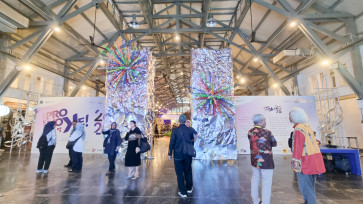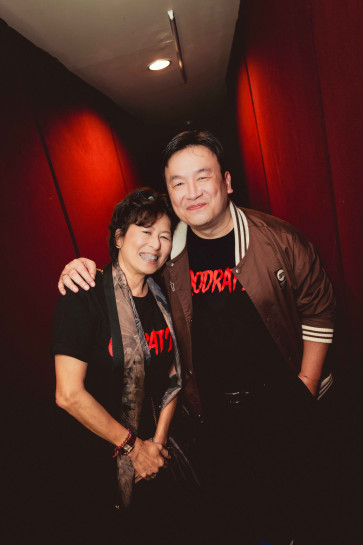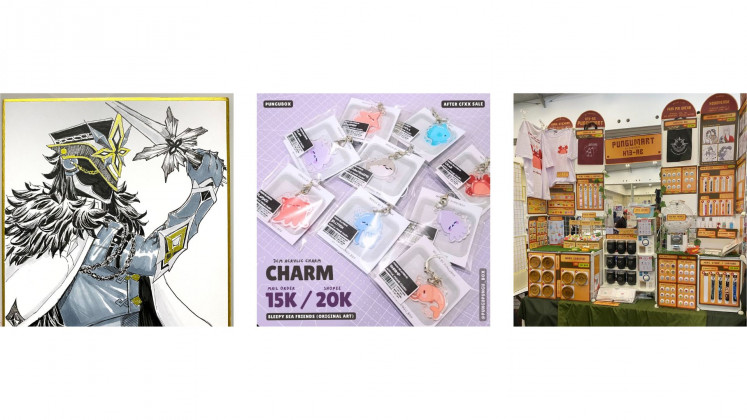When The art economy in Indonesia’s capital doesn’t just live in galleries. It thrives in indie markets scattered across Greater Jakarta, and Comic Frontier, better known as Comifuro, is at the heart of it. Held twice a year, it now draws more than 50,000 visitors and 1,000 creators from all over the country.
If Art Jakarta is the art world’s version of Java Jazz, then Comifuro is the indie band showcase happening down in Blok M’s Krapela.
To the casual eye, Comifuro might look like just a cosplay gathering, full of vibrant costumes and anime icons. But step inside the Indonesia Convention Exhibition (ICE), and you’ll find a bustling world of indie illustrators and creative entrepreneurs, especially in the artist alley.
Booths brim with fan art from Pokémon to Spider-Man, alongside beautiful original works. Artists sell everything from zines to keychains, with each booth operating like a mini shop.
Comifuro isn’t just a fan convention. It has become a proving ground for Jakarta’s new wave of creatives.
“It's really just a melting pot of ideas, somewhere people can express themselves freely." - Sudwi Karyadi

Thank you!
For signing up to our newsletter.
Please check your email for your newsletter subscription.
What started in 2012 as a student-led program within Universitas Indonesia’s Gelar Jepang (Japanese cultural festival) has grown into Indonesia’s leading indie art event. From 35 artists and 1,500 visitors, the event expanded to 780 exhibitors and 25,000 attendees by 2020, before moving from Balai Kartini in South Jakarta to ICE in Tangerang to accommodate the surge.
Comifuro’s influence goes beyond its own walls, sparking a wave of similar art markets like Art Ket, Kira Kira Art Market and Tomo Land.
“We want to create a network that allows new markets to be developed,” says project officer Sudwi Karyadi.
“The brands we feature can meet up-and-coming talent, and our exhibiting artists can directly learn from experienced figures in the creative industry.”
What lies beneath the wigs and costumes is a rising creative economy powered by local creators and a community that shows up for them.
Creative pilgrims
For indie illustrators and creative entrepreneurs across the country, Comifuro is a pilgrimage. For the industry, it’s a talent pool and testing ground.
“We wanted to create an accessible space for beginner creators to showcase their art and meet like-minded artists,” Sudwi says.
But Comifuro has evolved beyond beginner territory. Major players like Indonesian game studio Toge Productions, Japanase trading card company Bushiroad and Ultraman creator Tsuburaya Productions now attend, not just to exhibit, but to scout.
“Our vision is still the same,” Sudwi says.
“But now we can meaningfully connect local talent to key industry players.”
Two virtual editions during the pandemic drew more than 120,000 viewers combined, catapulting the event into national awareness, and artists now get discovered just by opening a booth.
The real engine of Comifuro is its community.
“You can only do so much in the vastness of the digital space,” says Gabby, an artist known as nosleeps.co.
“Art markets give creators a passionate audience and brand awareness.”
. (Courtesy of nosleeps.co/.)
But it’s more than commerce. These markets become mentorship zones, collaborative labs and emotional support circuits.
“We meet other creators, trade art and learn how to turn our passion into an entrepreneurial effort from senior artists,” says Catherine from Calon Builiuner, a booth by high school graduates hailing from Surabaya.
. (Courtesy of Zeeyups/.)
For Natali, the artist known as una.done on Instagram, it’s about supporting each other.
“It's like a circular economy,” she says.
“I get paid to do art commissions in these events, but I end up paying for commissions by other cool artists too, learning from them along the way.”
These indie markets become an inspirational gateway. Some of the visitors became fellow artists, trying their hand at being producers, not just passive consumers.
“I grew up going to Comifuro,” recalls Moka, from the Seafood 888 group.
“I bought this one print around 10 years ago from this artist I like. Now they visit my booth and support my art.”
. (Courtesy of Seafood 888/.)
These art pilgrims come to Jakarta twice a year to experience this cultural rite of passage to network, learn and earn.
Thriving ecosystem
Comifuro and other indie markets like it now serve as the backbone of a thriving creative ecosystem.
“I’ve met so many of my amazing collaborators and got project offers through art markets like Art Ket and Comifuro,” says Mutiara, the artist behind Zeeyups.
. (Courtesy of Zeeyups/.)
For Seafood 888 group’s Zita, the connections go deeper than commerce.
“I had this one customer who first bought my art in Comifuro 17. Until now, they still swing by my booth there, and we’re actual friends now,” she shares.
Behind the scenes, becoming an artist is more accessible than ever. Local vendors offering printing, merchandise production and e-commerce services have lowered the barriers.
“There are so many vendors to work with for printing posters or making trinkets like keychains using your art now, and they have storefronts on popular e-commerce platforms,” says the artist Pungu Box.
In her experience, senior artists are often willing to help connect newcomers to trusted vendors.
. (Courtesy of @pungupungu_box/.)
Budgets are flexible, depending on what you want to create. For the sake of convenience, the out-of-town artists are choosing to produce in Jakarta.
“You can definitely start selling prints or stickers with a budget of around Rp 500,000 [US$30.72], or you can produce custom bags that use your art that cost Rp 4 million per batch,” Mutiara says.
"That's what's fun about it, you can freely choose how much you want to invest, but you get to experience the community all the same.”
. (Courtesy of Tya_07/.)
In a city like Jakarta, a creative ecosystem doesn’t just support the artist, it sustains them. And art markets in Jakarta have become a milestone for Indonesian artists, a place to be seen, to sell and to connect.
“It's really just a melting pot of ideas, somewhere people can express themselves freely, both as creators exchanging ideas, and fans looking for inspiration,” Sudwi says.
The potential isn’t just cultural, it’s commercial. Japan’s doujin (self-published artworks) market, which shares much in common with Jakarta’s art indie scene, is worth $923 million, according to Yano Research Institute.
It’s clear Jakarta already has the ingredients: artists, vendors and an engaged audience. Now the question is: How high can Jakarta’s creative economy climb?
Aqraa Sagir is a writer for The Jakarta Post's Creative Desk. He’s chronically online in the hope it would be a useful asset for the job.





























